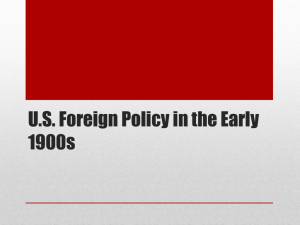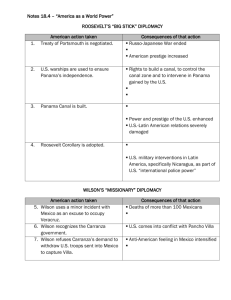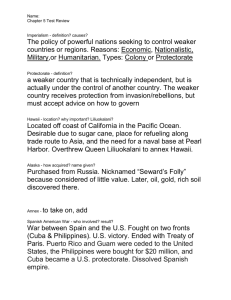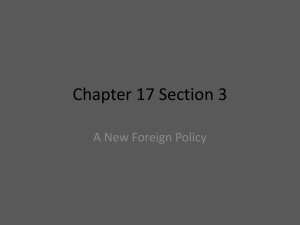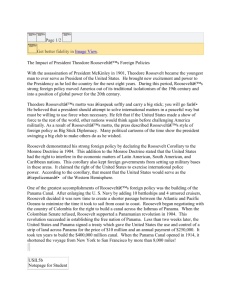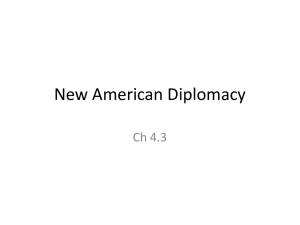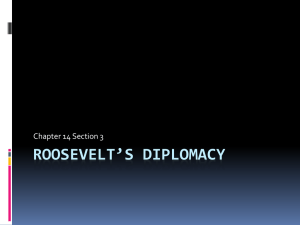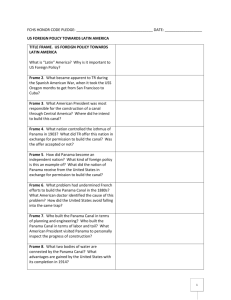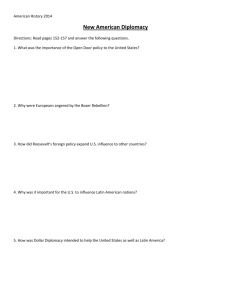Chapter 10 Reading Guide: U.S. Imperialism
advertisement
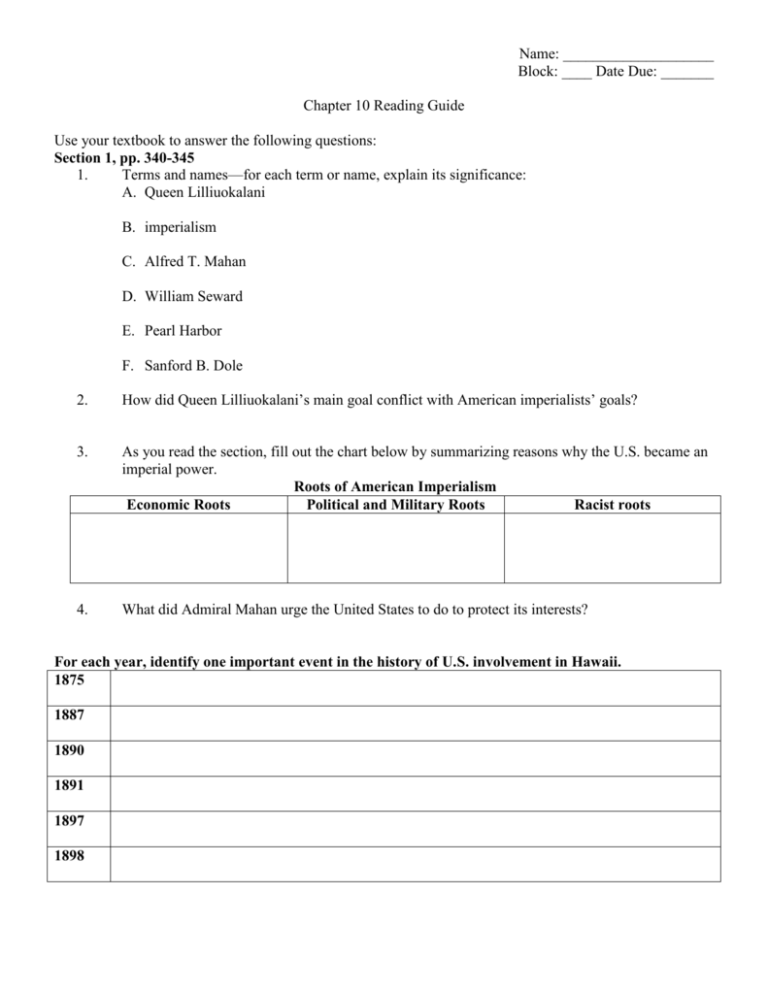
Name: ____________________ Block: ____ Date Due: _______ Chapter 10 Reading Guide Use your textbook to answer the following questions: Section 1, pp. 340-345 1. Terms and names—for each term or name, explain its significance: A. Queen Lilliuokalani B. imperialism C. Alfred T. Mahan D. William Seward E. Pearl Harbor F. Sanford B. Dole 2. How did Queen Lilliuokalani’s main goal conflict with American imperialists’ goals? 3. As you read the section, fill out the chart below by summarizing reasons why the U.S. became an imperial power. Roots of American Imperialism Economic Roots Political and Military Roots Racist roots 4. What did Admiral Mahan urge the United States to do to protect its interests? For each year, identify one important event in the history of U.S. involvement in Hawaii. 1875 1887 1890 1891 1897 1898 Section 2, pp. 346-351 1. Identify/define the following by explaining its significance. A. George Dewey B. Rough Riders C. San Juan Hill 2. Why was American opinion about Cuban independence divided? 3. List the terms of the Treaty of Paris of 1898 A. Cuba B. Philippines C. Guam and Puerto Rico Complete the chart as to how each helped cause the Spanish-American War American Business owners Jose Marti Valeriano Weyler Yellow Journalism De Lome Letter U.S.S. Maine Section 3, pp. 352-358 1. Identify/Define the following by explaining its significance: A. Foraker Act B. Platt Amendment C. Protectorate D. Emilio Aguinaldo E. John Hay 2. What sparked the boxer Rebellion in 1900, and how was it crushed? 3. How did John Hay’s “Open Door Notes” pave the way for greater U.S. influence in Asia? Section 4, pp. 359-365 1. Identify/define the following by explaining its significance A. Panama Canal B. Roosevelt corollary C. Dollar diplomacy D. Francisco “Poncho” Villa E. Emiliano Zapata F. John J. Pershing 2. What conflict triggered the war between Russian and Japan? 3. Why is the construction of the Panama Canal considered one of the world’s greatest engineering feats? 4. Explain the key difference between W. Wilson’s moral diplomacy and Teddy Roosevelt’s “big stick” diplomacy. 5. Complete the chart as to the cause and effect of American power around the world. American Action Treaty of Portsmouth is negotiated U.S. warships are used to ensure Panama’s independence Panama Canal is built Big Stick Policy Results/Consequences of that action Roosevelt corollary is adopted American Action Occupation of Veracruz Recognition of the Carranza government Troops are sent into Mexico to capture Villa “Missionary” Diplomacy Results/Consequences of that Action
